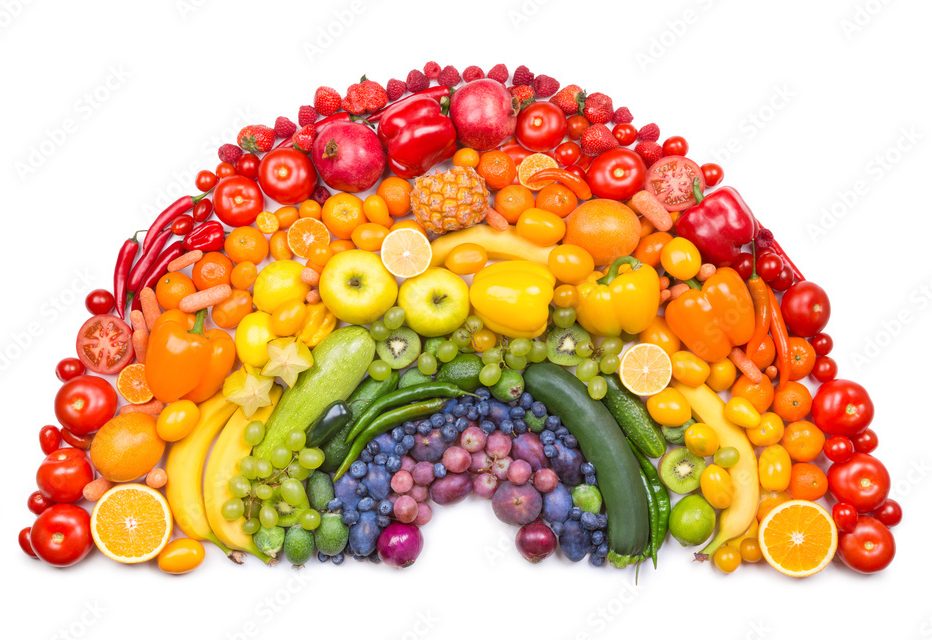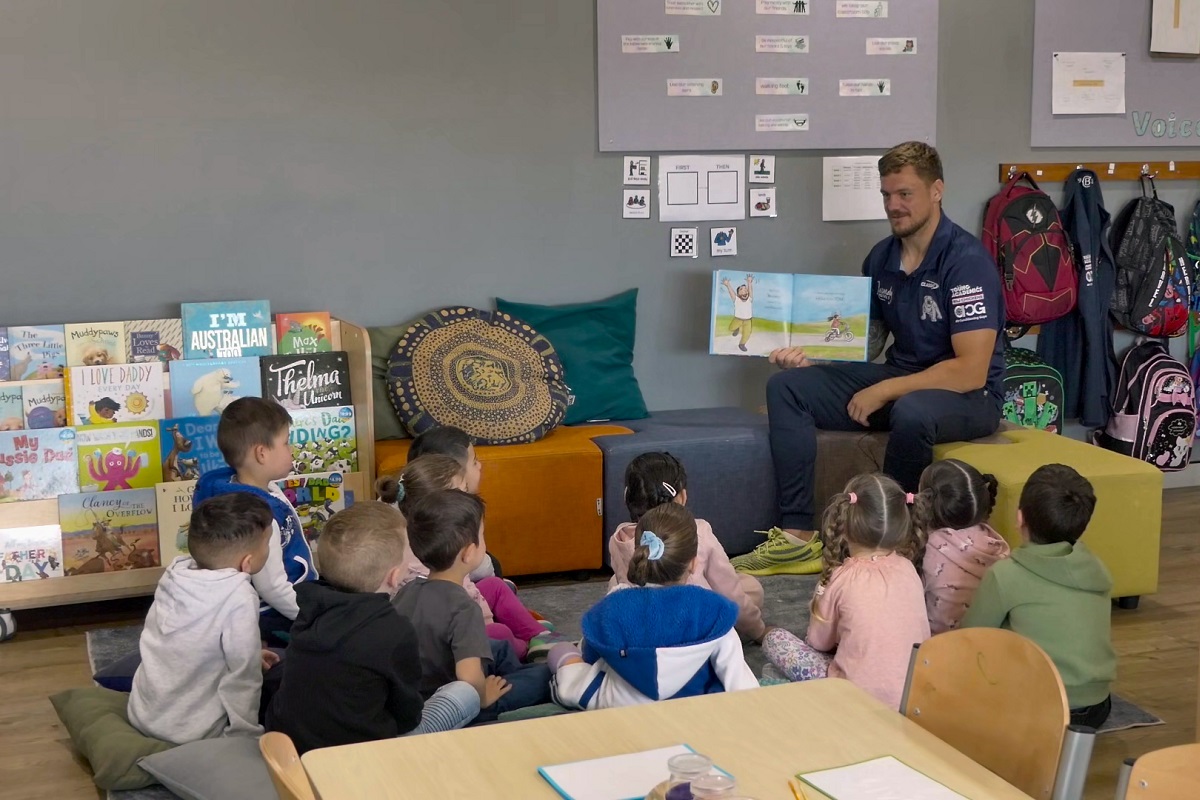It’s one thing getting children to colour in a rainbow, but when it comes to eating one, things can get a little tricky – especially if you’re living with a fussy eater. But eating fruits and vegetables across the colour spectrum isn’t just pretty, it’s also extremely important for your child’s nutrition, growth and development.
Why? Because each colour group dishes up ‘phytonutrients’, which are naturally occurring chemicals with different health benefits, which means the more colour you can cram onto each plate, the better.
Currently in Australia, less than 4%* of us are eating the number of vegetables recommended by Australian Dietary Guidelines, and children are doing worse than their parents. Less than 1% of two and three-year-olds are eating the recommended 2.5 serves of veggies and legumes every day, with a worrying 0% of children between four and eight hitting the target of 4.5 serves of vegetables daily (one serve is a cup of salad or half a cup of cooked veggies).
We’re doing a little better on the fruit front, with almost 80% of two and three-year-olds eating the recommended one serve (or one-piece) every day, but as children get older, their fruit intake gets worse, with 59% of four to eight-year-olds eating the suggested 1.5 pieces of fruit each day.
Making a conscious effort to ‘eat the rainbow’ is a great way to boost your intake of the good stuff, so let’s start with a rundown of the credentials of each colour:
Packed with anti-inflammatory and antioxidant properties, foods in the ‘red’ group have benefits for your heart, memory, and urinary tract, as well as helping prevent certain cancers.
Examples of red fruits and vegetables include tomatoes, apples, watermelon, raspberries, strawberries, cranberries, red onions, capsicums and guavas. If your toddler or pre-schooler usually gravitates to the sweet stuff, try serving capsicum in sticks or pop cherry tomatoes on toothpicks (under supervision!)
Full of vitamin C, these sunny coloured foods are known to support eye health, reduce inflammation, boost immunity and wound healing and lower the risk of heart disease and certain cancers.
Examples of orange and yellow fruit and vegetables include oranges, mandarins, carrots, pumpkin, pineapple, lemon, bananas, yellow peaches, mango, and sweet potatoes.
Carrot sticks are an all-time favourite, few children don’t love an in-season peach, baked sweet potatoes are a tasty alternative to white spuds and there’s a reason why oranges are still a popular pick at weekend sports games – they’re tasty, juicy and a quick and easy vitamin C hit.
When it comes to colour, green is king. A great source of vitamins A, B, C and K, green foods are packed with antioxidants, vitamins and minerals to promote good vision, maintain strong bones, help prevent cancer and heart disease and boost immunity. Greens are also alkalising, which makes them a great option to counteract the acid in most of our diets.
Within the green category, cruciferous greens are at the top of the tree when it comes to health benefits, so pile up your plate with broccoli, cabbage, cauliflower, kale and Brussel sprouts!
While green isn’t every child’s favourite food colour, the huge range of green options on offer – both sweet and savoury – makes it easy to include a good helping of green at every meal.
Options include spinach, lettuce, cucumber, avocado, broccoli, kiwifruit, Granny Smith apples, grapes, peas and edamame. Try lettuce wraps with a burger patty, grate greens such as zucchini into pasta sauce, serve edamame as a snack, or bake or poach apples for a healthy, hearty dessert.
The ideal choice to boost brain function, other benefits of blue and purple foods include anti-inflammatory and antioxidant properties and the potential to lower your risk of heart disease, certain cancers and type 2 diabetes.
Food options in this colour group include blackberries, plums, grapes, blueberries, eggplant and beetroot. Blueberries are a terrific on-the-go snack in a tub, juicy plums are a great seasonal swap for apples, while blackberries in yoghurt make a tasty dessert choice.
White foods are known to support bone health, strengthen your circulation, fight inflammation and reduce the risk of heart disease and colon cancer. Many white foods contain flavonoids which are important for preventing free-radical damage in your body – another important defence in preventing certain cancers.
Examples of popular ‘white’ foods include garlic, mushrooms, cauliflower, pears and onions.
Garlic is a great base to add to virtually any cooked meal, while roast cauliflower with hummus and figs or cranberries or baked cauliflower with cheese are popular family meals packed with veggie goodness.
Below we have curated some easy and delicious recipes that will put loads of colour on your plate and help your child to start eating the rainbow.
Ingredients
- 5 cups berry yoghurt
- ½ cup diced strawberries
- ½ cup blueberries
- 2 tbsp granulated sugar (optional)
- 1 cup granola
- 2tbsp peanut butter
- 2 tbsp honey
Method
Step 1: Mix together diced strawberries and blueberries (sugar optional). Set mixture aside for 15 minutes.
Step 2: Create the no-bake granola bar base. First heat peanut butter and honey in the microwave for 30 seconds until melted. Pour over granola and stir to mix.
Step 3: Put 1.5 tablespoons of granola mixture into lined muffin cups/tray and press it into the bottom.
Step 4: Top granola layer with ¼ cup of berry yoghurt.
Step 5: Top with a couple of teaspoons of the berry mixture.
Step 6: Cover the pan with plastic wrap and freeze overnight.
Step 7: When ready to serve, slowly peel off the cupcake liner. If you need to thaw the cupcake a little before eating, place the bottom of the muffin pan in shallow hot water.
Ingredients
- 12 eggs
- 1 cup grated cheese (cheddar/gouda/feta/gruyere)
- Salt & pepper to taste
- One large shallot
- Clove of garlic
- 3 cups broccoli florets (or baby spinach/any mixed green veggies)
- 1 avocado
Method
Step 1: Preheat oven to 180°C
Step 2: Add 12 eggs to a large bowl, add salt and pepper, whisk until liquid (this will take a while)
Step 3: Add grated or crumbled cheese to the egg mixture and set aside.
Step 4: Finely slice shallots and garlic. Dice vegetables and set them aside.
Step 5: Preheat a frying pan over low-medium heat. Add a splash of olive oil to the hot pan, then add sliced shallots and garlic and sauté for 30-60 seconds. Add veggies and sauté for 4-5 minutes (if using baby spinach it will only be about 1 minute).
Step 6: Add the egg & cheese mixture to the pan, remove it from the stove and place in the oven for approximately 20-25 minutes until lightly golden.
Step 7: Remove from the oven and place on a heatproof surface for at least 10 minutes to rest. Use a knife to run along the edges to remove from pan, then use two spatulas to lift frittata out of the pan to serve.
Step 8: Top with diced avocado to serve.
Would you like more information about Young Academics Nutrition Program? Follow a long as we will be sharing more tips and tricks from our Dietitian.



 BACK
BACK



